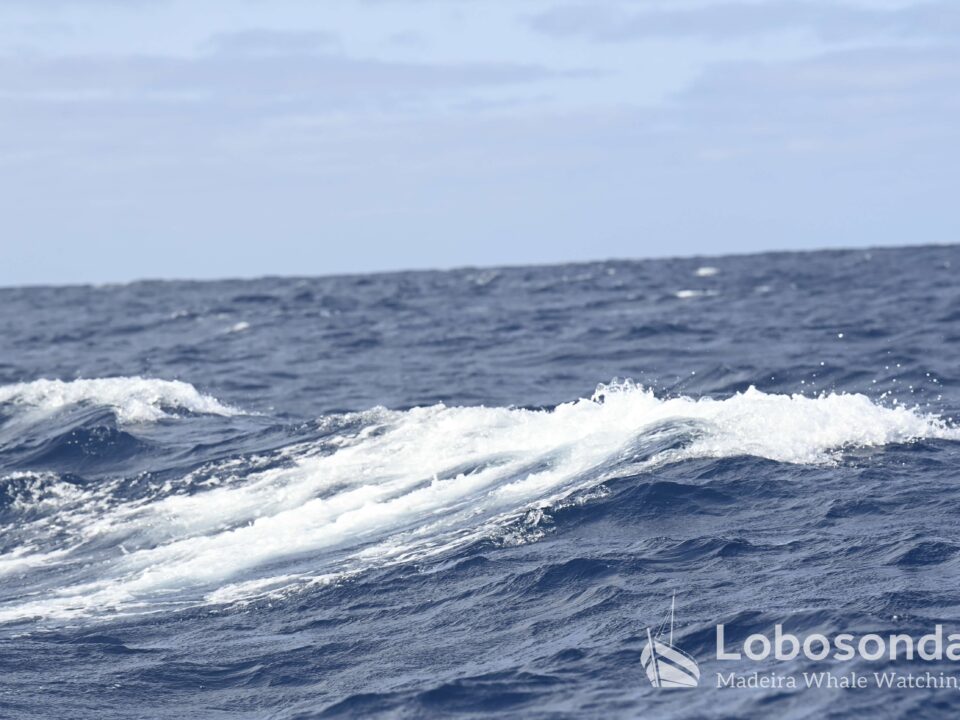
22.01.2024 – Colour & Greyscale
January 28, 2024
24.01.2024 – A Wednesday full of birthdays and whales!
January 30, 2024Guests often ask us what genders the groups we are observing are composed of and this can often be tricky to decipher. This is especially the case when conditions at sea are windy and wavy, as was the case today, but luckily we had all three sightings in more or less the same area.
The trip started with a beautiful pod of Short-beaked common dolphins (Delphinus delphis) dashing through the choppy waters in the company of the equally gorgeous Striped dolphins (Stenella coeruleoalba). While determining gender with these two species is virtually impossible from the boat, the presence of several calves in both pods allows us to assume that both pods mainly consisted of females. In some dolphins species, pods are largely composed of one gender but this may vary across regions and according to group dynamics. In reality the only way to be sure is to see the underside of the dolphin and check the number of slits. All cetaceans have a single genital slit and females have two additional lateral slits that function as milk glands.
While Short-finned pilot whales (Globicephala macrorhynchus) also tend to travel in pods that predominantly consist of one gender, they show one of the highest levels of sexual dimorphism amongst all dolphins meaning that differences between males and females are very visible. Adult male pilot whales are significantly larger than females and have a broader dorsal fin, making them easy to spot amongst matriarchal female pods. One larger male was moving with the pod but the wind made it harder to spot any more.
It was an adventurous and fun ride through the Atlantic and our team managed three species, despite the conditions. I’d say it was a successful start to the day!
By Paula Thake
Sightings of the day
Stenella
09:30 Short-beaked common dolphins, Short-finned pilot whales, Striped dolphins












